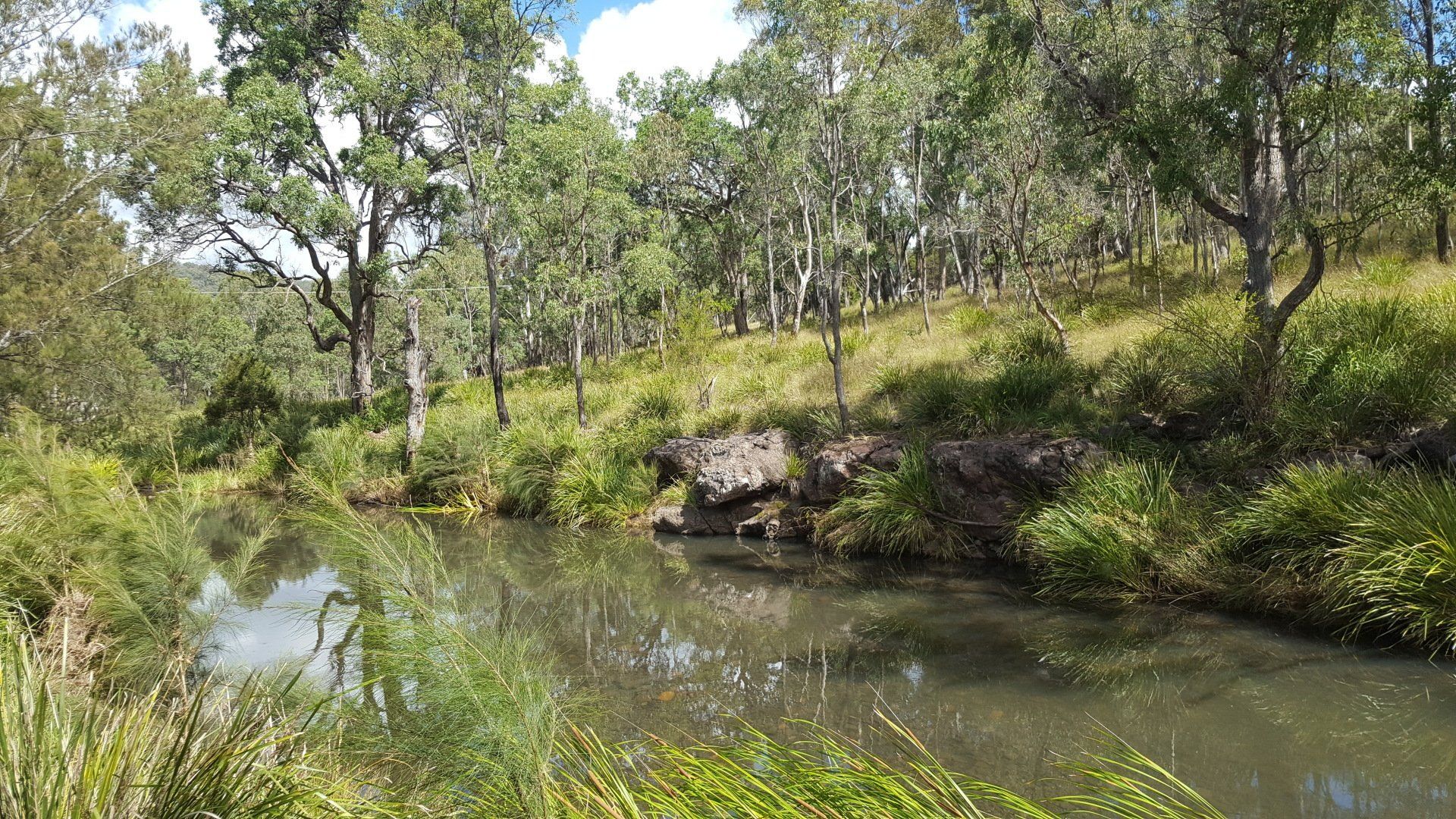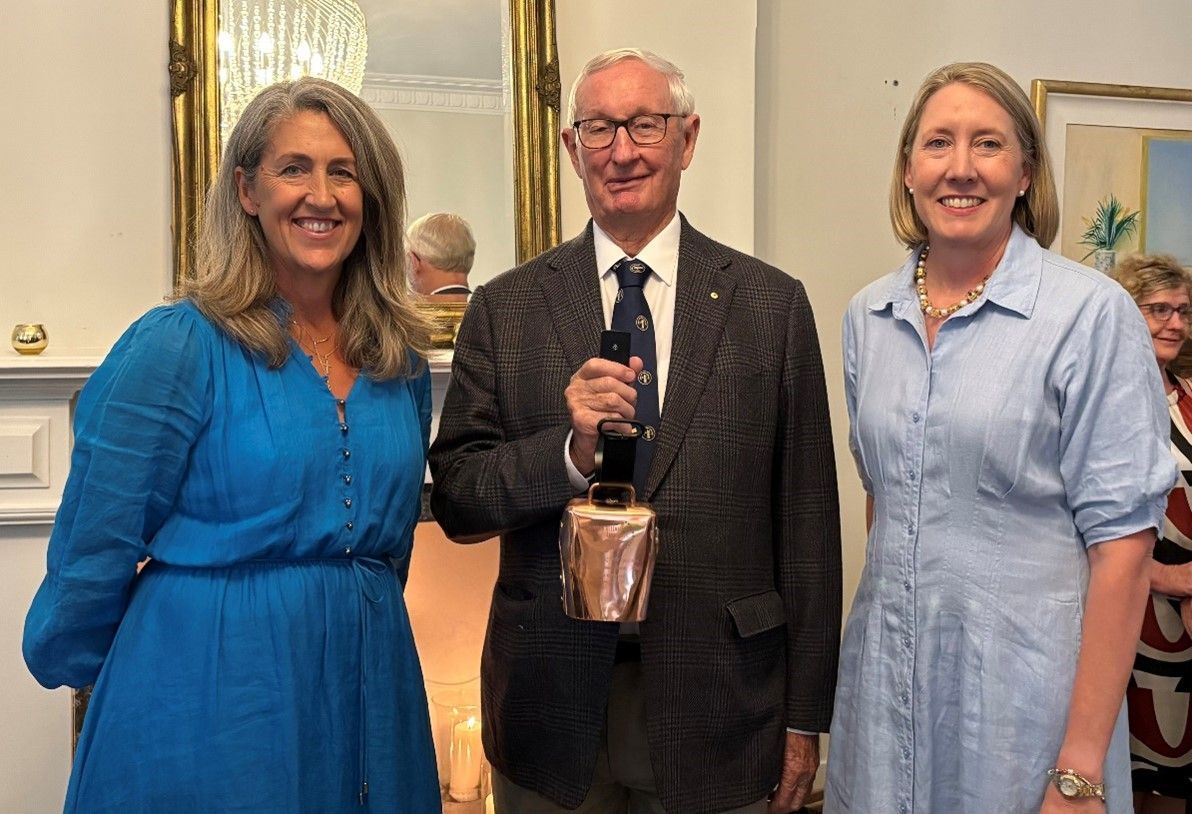NEWS

We are seeing fantastic momentum across the region, with strong interest from landholders in improving land condition. Even better, clusters of neighbouring properties are getting involved, a promising sign for achieving landscape-scale change that supports water infiltration, soil health, and resilient groundcover. To help visualise this, Projects Lead Payel Sinha, developed a set of clever graphics that capture the essence of the NRRP program. The circular diagram below shows how water, soil, vegetation, grazing, and ecosystem balance are interconnected, all working together to support healthier landscapes.

We were honoured to have CEO Gillian Meppem, Richard Turnbull, Dr Payel Sinha and Uncle Kevin, a Margany Elder from near Quilpie, come together on the Gold Coast for this year’s Landcare Conference, representing our vision, work and cultural partnerships across the region. Dr Payel Sinha delivered a presentation on the Natural Resource Recovery Program: A Holistic Approach to Restoring Landscapes , showcasing how integrative, place-based strategies can unite ecological health, cultural values and community resilience.

The rapidly evolving global market for agricultural commodities, including cotton, was front and centre at the recent Australian Cotton Research Conference held in Narrabri, NSW. A key theme throughout the event was the increasing pressure climate change places on cotton production and how the industry is adapting through innovation and research. Andrew Davidson of Southern Queensland Landscapes introduced an innovative national project funded by the Cotton Research and Development Corporation (CRDC). The project focuses on mapping woody vegetation across cotton farms in Australia, a crucial step toward better understanding on-farm biodiversity and supporting sustainability goals. The project uses a cutting-edge methodology developed by Southern Queensland Landscapes, drawing on a national dataset curated by the Terrestrial Ecosystem Research Network (TERN). What makes this approach unique is its ability to consistently measure vegetation across state and territory lines, overcoming long-standing challenges caused by fragmented and inconsistent regional datasets. The initiative is a true collaboration between the cotton industry, Natural Resource Management (NRM) groups, and NRM Regions Australia. Together, they aim to build a national picture of woody vegetation cover, including how much of it connects to larger, regional biodiversity corridors. Why It Matters... This vegetation data will provide a scientifically robust and cost-effective indicator of potential biodiversity on cotton farms. In practical terms, it can help: • Support cotton growers in meeting environmental standards for market access • Inform risk management strategies and conversations with financiers • Align with international frameworks such as: - The Science-Based Targets for Nature - The Post-2020 Biodiversity Framework - The Taskforce on Nature-related Financial Disclosures (TNFD) As the cotton industry looks to remain competitive and resilient in a changing climate, initiatives like this are critical. They help position Australian cotton as a globally trusted, environmentally responsible product.

Project Officers Katrina Higgins and Erin Landsberg recently joined Rose and Weston from Boobook Ecological Consulting in Roma, to complete field monitoring in the Murweh and Maranoa districts. This monitoring measures the value and health of Coolibah, Poplar Box, and Brigalow habitat. During this time, we deployed acoustic recorders and motion-sensor wildlife cameras, and took DNA samples from nearby water sources to ascertain the fauna within these threatened habitats.

Playing a Leading Role in the National Soil Monitoring Program Queensland’s regional Natural Resource Management (NRM) organisations are playing a leading role in the National Soil Monitoring Program (NSMP), one of Australia’s most ambitious efforts to assess and improve soil health. Funded by the Australian Government through the Natural Heritage Trust and led by CSIRO, the NSMP will involve sampling at approximately 3,000 sites nationwide over three years, more than 850 of those in Queensland, with a focus on key agricultural zones. Queensland’s NRM groups have formed northern and southern clusters to deliver the program, contributing valuable expertise from over 25 years of on-ground experience. Southern Queensland Landscapes will lead delivery for the QLD South cluster of regions. The data collected will provide a nationally consistent picture of soil condition and health, enabling better decision-making for farmers, land managers, and policymakers to support sustainable, climate-smart agriculture. Jayne Thorpe, Business Development Manager at Southern Queensland Landscapes said, “In total, the QLD South cluster will collect 565 soil samples over the course of the project. That will work out as 11.3 tonnes of soil sent for analysis!”

1. What is Natural Capital? Natural capital refers to the natural resources and ecosystems, like soils, native vegetation, water, and biodiversity, that underpin productive farming and provide essential services such as clean water, healthy soils and carbon storage. For Queensland landholders, this means your land’s value now includes the environmental benefits it delivers, not just crops or livestock. While the term Natural Capital has risen to prominence with government, industry and the public in recent years, the sustainable use of our natural capital, its maintenance and improvement have been fundamental to regional NRM organisations since inception. Identifying and assessing our natural assets are foundational to the development of our regional NRM strategies and plans which guide our operations and provide us with the knowledge and expertise to play a key role in Australia’s efforts to manage and enhance our Natural Capital. 2. Why Does Natural Capital Matter in Agriculture? Australian agriculture is experiencing a shift where nature and production are seen as interconnected assets. This approach is being driven by both market demand and new government policies, with natural capital now influencing land values, investments, and farm business resilience. 3. How Can Farmers Monetise Natural Capital? Natural capital markets allow landholders to earn income by improving or protecting their land’s natural assets. The most common ways to participate include: Carbon Credits: Under the Australian Carbon Credit Unit (ACCU) Scheme, farmers can generate credits by adopting practices like reforestation, soil carbon improvement, or avoided clearing. These credits are regulated by the Clean Energy Regulator (CER) and can be sold to the government or private buyers. Biodiversity Certificates: The new federal Nature Repair Market, established by the Nature Repair Act 2023, allows farmers to earn tradable biodiversity certificates for projects that restore or protect native ecosystems. The CER also administers this market, ensuring robust oversight and scientific credibility. Land Restoration Fund (LRF): Queensland’s LRF builds on the federal framework, offering extra incentives for projects that deliver both carbon abatement and environmental co-benefits, such as improved water quality or habitat restoration. The LRF works in tandem with the ACCU Scheme and prioritises projects that support regional sustainability. More Information: 🔗 www.environment.nsw.gov.au/topics/natural-capital/explained 🔗 www.cer.gov.au/schemes/australian-carbon-credit-unit-scheme 🔗 www.qld.gov.au/environment/climate/climate-change/land-restoration-fund 🔗 www.nrmrq.org.au/queensland-nature-fund-natural-capital 🔗 www.legislation.gov.au/C2023A00121/latest/text

The Board of Southern Queensland Landscapes is pleased to announce Kimberley Swords has been appointed as Chair of the Board of Directors. Kimberley began her working life as a large animal country vet, after student practical experience across Southern Queensland in Goondiwindi and Injune. Kimberley’s strong interest in natural resource management and regional communities has led her to contribute across a wide variety of industries including the public sector, where she rose to the role of Deputy Secretary in the Australian Government and led environmental approvals, heritage and marine. Her extensive leadership experience incorporates many board roles, including as a current serving member of the CS Energy board. “Following an extensive recruitment phase, where the Southern Queensland Landscapes Board were gratified to receive several high-quality applications, we are delighted to announce the subsequent overwhelming member endorsement of Kimberley as Board Chair. The appointment of a new Chair in any organisation represents an opportunity for refreshment and renewal and the Southern Queensland Landscapes Directors and staff are looking forward to working with Kimberley to deliver our Strategic Plan” said acting Southern Queensland Landscapes Chair, Louise Winten. Kimberly looks forward to engaging with stakeholders across Southern Queensland, with her first full board meeting set down for late June in Charleville. “It is an exciting and challenging time for the region, as we lean into the changing climate, different economic opportunities, and the next generation of regional leaders. I look forward to connecting and collaborating across our communities to better understand how Southern Queensland Landscapes can support sustainable environmental outcomes that materially improve the lives of people living and working in Southern Queensland,” she said. The position of Chair became vacant following the retirement of founding Chair, and long term supporter of regional natural resource management, The Honourable Bruce Scott, AM, at the end of February 2025. Bruce made a significant contribution to Southern Queensland Landscapes during his time as Chair and the Board thanks him for dedication, time, energy, and commitment to the organisation. Southern Queensland Landscapes is one of 11 Queensland-based Natural Resource Management (NRM) organisations. Spanning 314,398 square kilometres, the our footprint encompasses the Condamine catchment, Qld Murray Darling Basin and the south-west Mulga Lands. Southern Queensland Landscapes relies on evidence based information, supported by First Nations knowledge, to effectively balance productivity and environmental outcomes that support the regional communities within our landscapes.

Southern Queensland Landscapes is seeking an experienced and influential Board Chair to lead a multi-skilled Board in managing natural resources across Southern Queensland. This is a 3-year remunerated role based in Toowoomba, QLD, with the flexibility to manage from anywhere in Southern QLD. The ideal candidate will bring: • Substantial experience leading diverse Boards • Strong relationship-building and leadership skills • Expertise in environmental and agricultural matters This role is an opportunity to shape the future of natural resource management, working closely with land managers, community leaders, and industry professionals. Are you ready to make an enduring impact? For more details and to apply, visit www.windsor-group.com.au/job/board-chair-natural-resources-peak-body or contact Mike Conroy at apply@windsor-group.com.au.

